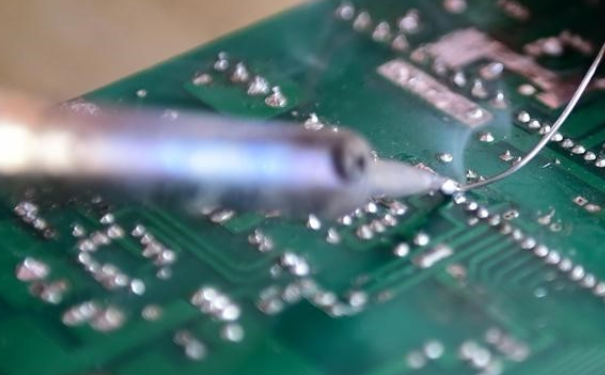What is the difference between wave soldering and reflow soldering in electronic welding technology?
Date:2022-10-24 18:24:46 Views:3278
Most electronic products have precise internal structure, small components, high electronic integration and high requirements for welding. Welding technology plays an important role in the assembly of electronic products. Wave soldering and reflow soldering are two important technologies in the development of electronic welding. To help you understand, the following contents are organized by the Core Creation Detection Network for your reference.

1. Wave soldering:
Wave soldering is to make the welding surface of the plug-in board directly contact with the high-temperature liquid tin to achieve the purpose of welding, and the high-temperature liquid tin keeps a slope.
Wave soldering process: insert>apply flux>preheat>wave soldering>cut corners>check.
2. Reflow soldering:
Reflow soldering process is to realize the soft soldering of mechanical and electrical connection between the solders of surface mounted components or pins and PCB pads by remelting the paste solder pre allocated to PCB pads.
Reflow soldering process: printing solder paste>mounting components>reflow soldering>cleaning
3. Difference between wave soldering and reflow soldering:
Difference 1:
Reflow soldering process is to realize the soft soldering of the mechanical and electrical connection between the solders of surface mounted components or pins and the PCB pad by remelting the paste solder pre allocated to the PCB pad.
Wave soldering has a new welding process with the enhancement of people's awareness of environmental protection. In the past, tin lead alloy was used, but lead is a heavy metal that does great harm to human body. So now there is lead technology. It uses tin silver copper alloy and special flux, and requires higher welding temperature and higher preheating temperature. In addition, a cooling area workstation should be set up after PCB passes the welding area. This is to prevent thermal shock. On the other hand, ICT will affect the detection.
Wave soldering can be basically interpreted as soldering for slightly larger and relatively small components, which is different from reflow soldering. Reflow soldering heats up the boards and components, in fact, it liquefies the originally painted solder paste, so as to achieve the goal of connecting the components with the boards.
1. Reflow soldering passes through preheating zone, reflow zone and cooling zone. In addition, wave soldering is applicable to hand inserting boards and glue dispensing boards, and all components are required to be heat-resistant. The wave passing surface should not have components that used SMT solder paste. The SMT solder paste board can only be reflow soldered, and wave soldering is not allowed.
2. Wave soldering is to melt the tin bar into liquid state through the tin bath, and use the motor to stir to form waves, so that PCB and parts can be welded together. It is generally used for the welding of hand plug-ins and smt glue boards. Reflow soldering is mainly used in the SMT industry. It melts the solder paste printed on PCB and solders the components through hot air or other heat radiation conduction.
3. Different processes: wave soldering needs to spray flux first, then through preheating, welding and cooling zone.
Difference 2:
Wave soldering is mainly used for welding plug-ins; Reflow soldering main patch type components
1. Wave soldering is to melt the tin bar into liquid through the tin bath, and use the motor to stir it to form waves, so that PCB and parts can be welded together. It is generally used for the welding of hand plug-ins and the glue plate of SMT. Reflow soldering is mainly used in the SMT industry. It melts solder paste printed on PCB and solders components through hot air or other heat radiation conduction.
2. Different processes: wave soldering requires spraying flux first, and then preheating, welding and cooling areas. Reflow soldering passes through preheating zone, reflow zone and cooling zone. In addition, wave soldering is applicable to hand inserting boards and glue dispensing boards, and all components are required to be heat-resistant. The wave passing surface should not have components that used SMT solder paste. The boards of SMT solder paste can only be reflow soldered, and wave soldering is not allowed.
The above is the difference between wave soldering and reflow soldering in the electronic welding technology compiled by the trauma core detection team. I hope it will be helpful to you. Chuangxin Testing is a professional testing agency for electronic components. At present, it mainly provides integrated circuit testing services such as capacitance, resistance, connector, MCU, CPLD, FPGA, DSP, etc. Specializing in electronic component function testing, electronic component incoming appearance testing, electronic component dissection testing, acetone testing, electronic component X-ray scanning testing, ROHS component analysis testing. Welcome to call, we will serve you wholeheartedly!




 Weixin Service
Weixin Service

 DouYin
DouYin
 KuaiShou
KuaiShou





















